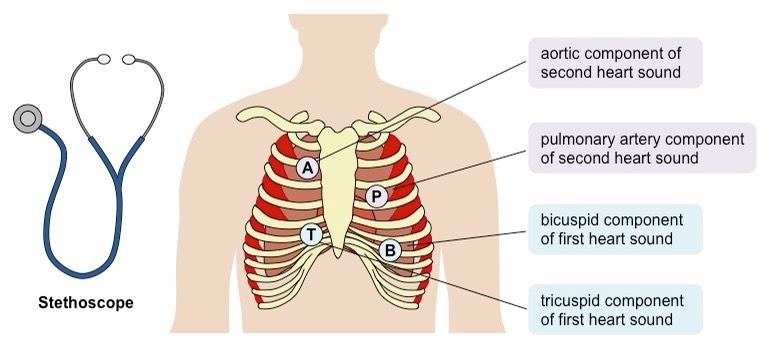Diagnostic measurements can be taken using a range of devices to test the efficiency of the cardiovascular system
- Two common tests performed are auscultation and blood pressure measurements
Auscultation
- Auscultation involves listening to the internal sounds of body organs, by using a stethoscope
- Auscultation is commonly used to listen to the different heart sounds in order to assess the health of the heart
- By placing the stethoscope at different points on the chest, the closure of each of the four heart valves can be heard
- This allows physicians to determine if the heart is functioning normally
Measuring Heart Sounds via Auscultation

Blood Pressure
Blood pressure measurements include two readings – a systolic pressure and a diastolic pressure
- The systolic pressure is a higher value that represents the pressure in the vessel when the heart is contracting (i.e. pulse flow)
- The diastolic pressure is a lower value that represents the pressure in the vessel when the heart is relaxing
Blood pressure is measured in arteries using a sphygmomanometer (veins do not have sufficient pressure to be easily detected)
- The sphygmomanometer is a blood pressure cuff that cuts off circulation to a region (typically the brachial artery in the arm)
- The pressure of the cuff is slowly released until a pulse can be audibly detected with a stethoscope (systolic pressure)
- The pressure continues to be released from the cuff until a pulse can no longer be audibly detected (diastolic pressure)
- A normal blood pressure for a healthy adult is approximately 120 / 80 mmHg
Measuring Blood Pressure with a Sphygmomanometer

